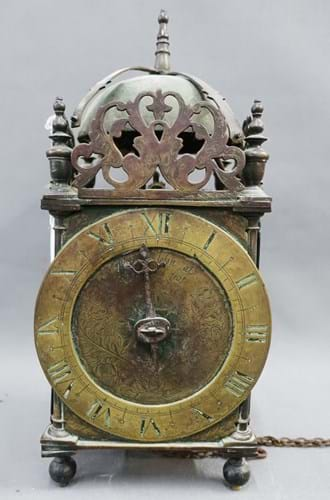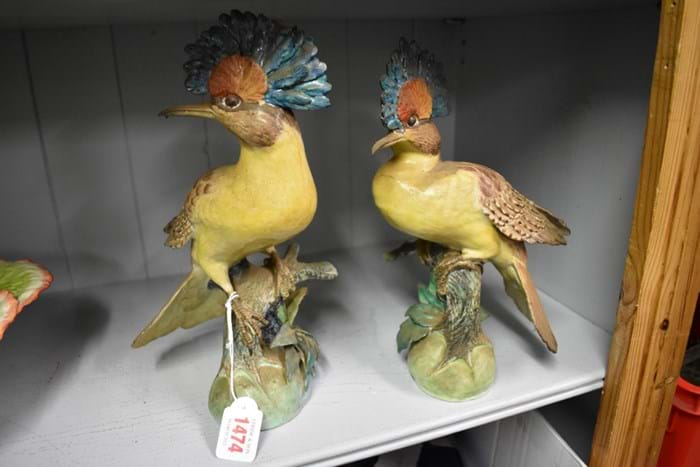1. Victorian fishing reel – £2600
This 3in (7.5cm) brass and ivorine fishing reel is inscribed to the face Ustonson & Peters, Makers to the Queen, 48 Bell Yard, Temple Bar, London.
Onesimus Ustonson (1736-83) is a celebrated name in early fishing tackle. Apprenticed to John Herro, a fishing tackle maker based at the Fish and Crown in a narrow street between Carey Street and Fleet Street, he took over the business in 1760. The firm remained a market leader and family concern for the next century supplying luxury tackle to, among others, the naturalist Joseph Banks for Cook’s Second Voyage and three reigning monarchs. The fishing rod and tackle supplied by daughter-in-law Maria Ustonson (1784-1856) to George IV in 1824 for use at Virginia Water at an eye-watering cost £196 10s is part of the Royal Collection.
This reel is a relatively late issue, made when the firm was run by Maria Ustonson and William Peters, another Bell Yard tackle maker. The partnership between the two lasted seven years from 1847-55 and it was this name that the firm exhibited its wares at the Great Exhibition of 1851.
A rare reel from this brief period, it was guided at £100-200 at a Duke’s of Dorchester sale of Coins, Medals and Militaria, Arms and Armour, Sporting and Taxidermy on March 11. The hammer price was £2600.
2. 17th century lantern clock – £6500
Peter Closon (c.1594-c.1662) was one of the most prolific of the so-called First Period lantern clock makers – although relatively little is known about his life. Probably an emigre from France or the Low Countries who worked in London from c.1615, he was involved in the very beginnings of the Clockmaker's Company in 1631, took on many apprentices who became makers in their own right, and continued to trade into the pendulum era, flirting himself with the new technology. According to the inscriptions to many of Closon’s surviving clocks his workshop was sited ‘near Holborn Bridge’.
This mid 17th century brass lantern clock, offered by Franklin Browns in Edinburgh on March 13 is inscribed to the foliate dial Peter Closon, Holborn Bridge Fecit. It has a weight driven movement with two independent wheel trains and has been later converted to pendulum use.
Estimated at £400-600 it sold at £6500.
3. Whitefriars wine glass – £3000
Although catalogued simply as ‘a 19th century Art Nouveau glass’ and estimated at just £30-50, a letter that accompanied this rare wine glass gave a clue to its origins. It speculated a connection with J Powell & Sons of Whitefriars, the glass factory acquired by the wine-merchant James Powell in 1834. Glasses of this form, with free twisted stems and tulip bowls, were designed by Powell’s grandson Harry Powell at the very end of the 19th century. Similar glasses were exhibited at the Arts & Crafts Exhibition 1906.
However what really made this a rarity was the coloured bowl, a mix of white and purple glass. Offered for sale by Rowleys in Ely on March 13 it made an estimate-busting £3000.
4. Joseph Gott white marble group – £12,300
Apprenticed to John Flaxman at the turn of the 19th century, Joseph Gott (1785-1860) travelled to Rome in 1822 on a pension from Sir Thomas Lawrence. While he would spend the majority of his career in Italy, his patronage remained firmly rooted in the British (and specifically Yorkshire) milords.
Small-scale depictions of animals and children were his stock in trade with the first of many recorded animal groups Greyhound and her Puppies commissioned by the 6th Duke of Devonshire in 1823.
The white marble group pictured here, its oval base measuring 2ft 6in (75cm) across, depicts a vixen and her two cubs. It was among the furnishings of Eyrefield Lodge, a stud farm in Kildare, that were sold by Sheppards of Durrow on March 11. The property, owned for half a century by Sir Edmund and Lady Susan Loder, has recently been sold with the couple downsizing following a move to London. This sculpture was a much-loved family piece and it proved similarly commercial, selling well above the €1500-2500 guide to bring €13,500 (£12,300).
5. Stoneware birds by Lady Anne Gordon – £1450
This pair of 1970s or 80s stoneware models of hoopoes carry the monogram AG for Lady Anne Gordon, Dowager Marchioness of Aberdeen (1924-2007).
Anne Gordon (née Barry) made these vibrant ceramics – her best-known designs are vegetables and birds – at a studio adjoining her house in Berkshire. She had married Captain Alastair Gordon, a nephew of the 2nd Marquess of Aberdeen, in 1950 and had been surprised to see him inherit the title in 1984.
Her designs, often used as centrepieces for dining room tables, were championed by the Scottish-born interior designer Jean Monro, who ran a shop in London’s Knightsbridge and held annual sell-out exhibitions of her work.
It only rarely appears for sale (a collection of her works sold by Duke’s in October 2020 was among the first offered at a regional saleroom) but has a substantial following in both the UK and the US where she was known simply as ‘the cabbage lady’.
This pair of 11in (27cm) birds (with chips to a crest) came up at Stride & Son of Chichester on March 12 where, estimated at £80-120, they sold at £1450.










